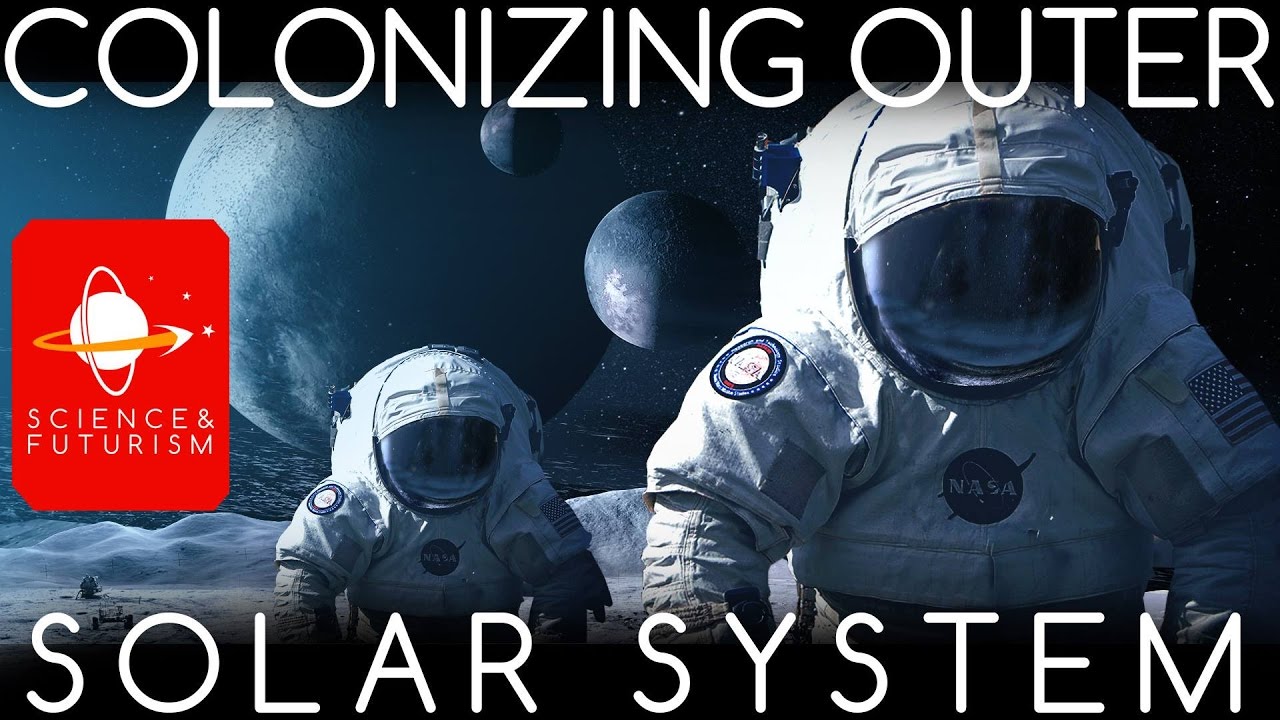What would the economy of a future Mars society look like, and how could it be self-sustaining while being completely sovereign from Earth and its own economy? This is what a recent study submitted to Space Policy hopes to address as a sole researcher discusses a model that could be used for establishing economic freedom on Mars, enabling both monetary and political stability across all Red Planets settlements. This study holds the potential to help scientists, economists, and world leaders better understand plausible governmental systems used by human settlers on other worlds while maintaining sovereignty from Earth and its own governmental law and order.
Continue reading “What could a future sovereign Mars economy look like?”How Do We Settle on Ceres?

Welcome back to our series on Settling the Solar System! Today, we take a look at the largest asteroid/planetoid in the Main Belt – Ceres!
Between the orbits of Mars and Jupiter lies the Solar System’s Main Asteroid Belt. Within this region, it is estimated that there are over 150 million objects that measure 100 meters (330 ft) or more in diameter. The largest of these is the dwarf planet Ceres (aka. 1 Ceres), the only body in the Main Belt that is large enough – 940 km (585 mi) in diameter – to have undergone hydrostatic equilibrium (become spherical).
Because of its important location and the amenities this dwarf planet itself possesses, there are those who have proposed that we establish a colony on Ceres (and even some who’ve explored the idea of terraforming it). This could serve as a base for asteroid mining ventures as well as an outpost of human civilization, one which could facilitate the expansion of humanity farther out into the Solar System.
Continue reading “How Do We Settle on Ceres?”Most of the Solar System Should be a Protected Wilderness. One-Eighth Left for Mining and Resource Exploitation
There is no doubt that our world is in the midst of a climate crisis. Between increasing levels of carbon dioxide in our atmosphere, rising temperatures and sea levels, ocean acidification, species extinctions, waste production, diminishing supplies of fresh water, drought, severe weather, and all of the resulting fallout, the “Anthropocene” is not shaping up too well.
It is little wonder then why luminaries like Stephen Hawking, Buzz Aldrin, and Elon Musk believe that we must look off-world to ensure our survival. However, there are those who caution that in so doing, humans will simply shift our burdens onto new locations. Addressing this possibility, two distinguished researchers recently published a paper where they suggest that we should set aside “wilderness” spaces” in our Solar System today.
Continue reading “Most of the Solar System Should be a Protected Wilderness. One-Eighth Left for Mining and Resource Exploitation”Gateway Foundation Shows off Their Plans for an Enormous Rotating Space Station

Since the end of the Apollo-era, one of the main goals of NASA, Roscosmos and other space agencies has been the development of technologies that will enable a long-term human presence in space. These technologies will also help when it comes time to mount renewed missions to the Moon, to Mars, and other locations in the Solar System. Over the past few decades, these efforts have yielded Mir and the International Space Station (ISS).
In the coming years, these efforts will also lead to the Lunar Orbital Platform-Gateway and commercial space stations – like the Bigelow B330. And if private aerospace companies like the Gateway Foundation get their way, we’ll also have a spaceport in orbit around Earth. The company recently posted a video showing exactly what this rotating wheel space station will look like, and how companies like SpaceX could help build it.
Continue reading “Gateway Foundation Shows off Their Plans for an Enormous Rotating Space Station”Honey, Where’s the Space Sperm? It’s in Low-Earth Orbit, Dear
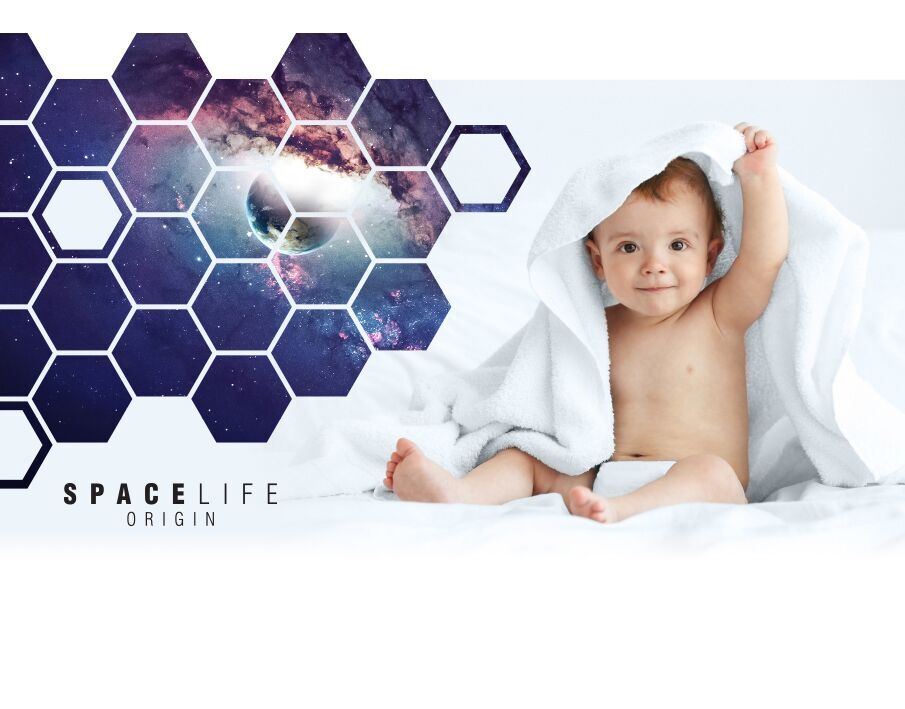
It’s always wise to be prepared for a disaster, but space sperm is taking it a little too far. Having things like food, water, and medicines on hand constitutes a reasonable level of preparation. But now one company wants to freeze your eggs and sperm in space.
Continue reading “Honey, Where’s the Space Sperm? It’s in Low-Earth Orbit, Dear”
The Future of Space Colonization – Terraforming or Space Habitats?

The idea of terraforming Mars – aka “Earth’s Twin” – is a fascinating idea. Between melting the polar ice caps, slowly creating an atmosphere, and then engineering the environment to have foliage, rivers, and standing bodies of water, there’s enough there to inspire just about anyone! But just how long would such an endeavor take, what would it cost us, and is it really an effective use of our time and energy?
Such were the questions dealt with by two papers presented at NASA’s “Planetary Science Vision 2050 Workshop” last week (Mon. Feb. 27th – Wed. Mar. 1st). The first, titled “The Terraforming Timeline“, presents an abstract plan for turning the Red Planet into something green and habitable. The second, titled “Mars Terraforming – the Wrong Way“, rejects the idea of terraforming altogether and presents an alternative.
The former paper was produced by Aaron Berliner from the University of California, Berkeley, and Chris McKay from the Space Sciences Division at NASA Ames Research Center. In their paper, the two researchers present a timeline for the terraforming of Mars that includes a Warming Phase and an Oxygenation Phase, as well as all the necessary steps that would precede and follow.
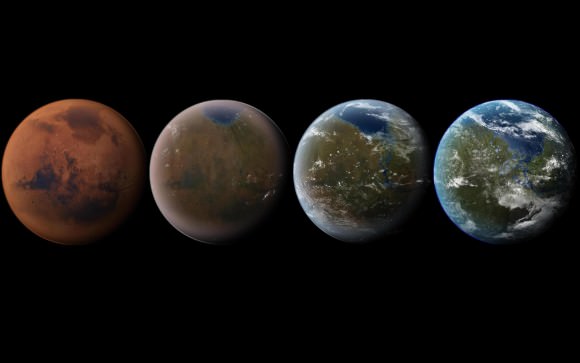
As they state in their paper’s Introduction:
“Terraforming Mars can be divided into two phases. The first phase is warming the planet from the present average surface temperature of -60° C to a value close to Earth’s average temperature to +15° C, and recreating a thick CO² atmosphere. This warming phase is relatively easy and quick, and could take ~100 years. The second phase is producing levels of O² in the atmosphere that would allow humans and other large mammals to breath normally. This oxygenation phase is relatively difficult and would take 100,000 years or more, unless one postulates a technological breakthrough.”
Before these can begin, Berliner and McKay acknowledge that certain “pre-terraforming” steps need to be taken. These include investigating Mars’ environment to determine the levels of water on the surface, the level of carbon dioxide in the atmosphere and in ice form in the polar regions, and the amount of nitrates in Martian soil. As they explain, all of these are key to the practicality of making a biosphere on Mars.
So far, the available evidence points towards all three elements existing in abundance on Mars. While most of Mars water is currently in the form of ice in the polar regions and polar caps, there is enough there to support a water cycle – complete with clouds, rain, rivers and lakes. Meanwhile, some estimates claim that there is enough CO² in ice form in the polar regions to create an atmosphere equal to the sea level pressure on Earth.
Nitrogen is also a fundamental requirement for life and necessary constituent of a breathable atmosphere, and recent data by the Curiosity Rover indicate that nitrates account for ~0.03% by mass of the soil on Mars, which is encouraging for terraforming. On top of that, scientists will need to tackle certain ethical questions related to how terraforming could impact Mars.
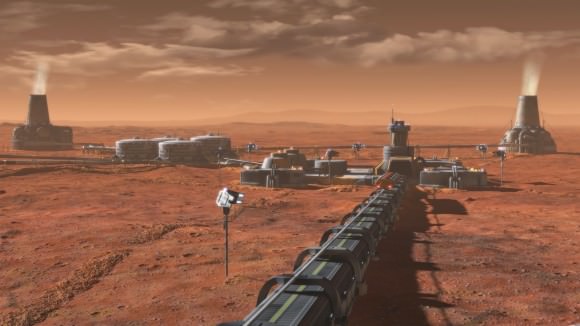
For instance, if there is currently any life on Mars (or life that could be revived), this would present an undeniable ethical dilemma for human colonists – especially if this life is related to life on Earth. As they explain:
“If Martian life is related to Earth life – possibly due to meteorite exchange – then the situation is familiar, and issues of what other types of Earth life to introduce and when must be addressed. However, if Martian life in unrelated to Earth life and clearly represents a second genesis of life, then significant technical and ethical issues are raised.”
To break Phase One – “The Warming Phase” – down succinctly, the authors address an issue familiar to us today. Essentially, we are altering our own climate here on Earth by introducing CO² and “super greenhouse gases” to the atmosphere, which is increasing Earth’s average temperature at a rate of many degrees centigrade per century. And whereas this has been unintentional on Earth, on Mars it could be re-purposed to deliberately warm the environment.
“The timescale for warming Mars after a focused effort of super greenhouse gas production is short, only 100 years or so,” they claim. “If all the solar incident on Mars were to be captured with 100% efficiency, then Mars would warm to Earth-like temperatures in about 10 years. However, the efficiency of the greenhouse effect is plausibly about 10%, thus the time it would take to warm Mars would be ~100 years.”

Once this thick atmosphere has been created, the next step involves converting it into something breathable for humans – where O² levels would be the equivalent of about 13% of sea level air pressure here on Earth and CO² levels would be less than 1%. This phase, known as the “Oxygenation Phase”, would take considerably longer. Once again, they turn towards a terrestrial example to show how such a process could work.
Here on Earth, they claim, the high levels of oxygen gas (O²) and low levels of CO² are due to photosynthesis. These reactions rely on the sun’s energy to convert water and carbon dioxide into biomass – which is represented by the equation H²O + CO² = CH²O + O². As they illustrate, this process would take between 100,000 and 170,000 years:
“If all the sunlight incident on Mars was harnessed with 100% efficiency to perform this chemical transformation it would take only 17 years to produce high levels of O². However, the likely efficiency of any process that can transform H²O and CO² into biomass and O² is much less than 100%. The only example we have of a process that can globally alter the CO² and O² of an entire plant is global biology. On Earth the efficiency of the global biosphere in using sunlight to produced biomass and O2 is 0.01%. Thus the timescale for producing an O² rich atmosphere on Mars is 10,000 x 17 years, or ~ 170,000 years.”
However, they make allowances for synthetic biology and other biotechnologies, which they claim could increase the efficiency and reduce the timescale to a solid 100,000 years. In addition, if human beings could utilize natural photosynthesis (which has a comparatively high efficiency of 5%) over the entire planet – i.e. planting foliage all over Mars – then the timescale could be reduced to even a few centuries.
Finally, they outline the steps that need to be taken to get the ball rolling. These steps include adapting current and future robotic missions to assess Martian resources, mathematical and computer models that could examine the processes involved, an initiative to create synthetic organisms for Mars, a means to test terraforming techniques in a limited environment, and a planetary agreement that would establish restrictions and protections.
Quoting Kim Stanley Robinson, author of the Red Mars Trilogy, (the seminal work of science fiction about terraforming Mars) they issue a call to action. Addressing how long the process of terraforming Mars will take, they assert that we “might as well start now”.
To this, Valeriy Yakovlev – an astrophysicist and hydrogeologist from Laboratory of Water Quality in Kharkov, Ukraine – offers a dissenting view. In his paper, “Mars Terraforming – the Wrong Way“, he makes the case for the creation of space biospheres in Low Earth Orbit that would rely on artificial gravity (like an O’Neill Cylinder) to allow humans to grow accustomed to life in space.
Looking to one of the biggest challenges of space colonization, Yakovlev points to how life on bodies like the Moon or Mars could be dangerous for human settlers. In addition to being vulnerable to solar and cosmic radiation, colonists would have to deal with substantially lower gravity. In the case of the Moon, this would be roughly 0.165 times that which humans experience here on Earth (aka. 1 g), whereas on Mars it would be roughly 0.376 times.

The long-term effects of this are not known, but it is clear it would include muscle degeneration and bone loss. Looking farther, it is entirely unclear what the effects would be for those children who were born in either environment. Addressing the ways in which these could be mitigated (which include medicine and centrifuges), Yakovlev points out how they would most likely be ineffective:
“The hope for the medicine development will not cancel the physical degradation of the muscles, bones and the whole organism. The rehabilitation in centrifuges is less expedient solution compared with the ship-biosphere where it is possible to provide a substantially constant imitation of the normal gravity and the protection complex from any harmful influences of the space environment. If the path of space exploration is to create a colony on Mars and furthermore the subsequent attempts to terraform the planet, it will lead to the unjustified loss of time and money and increase the known risks of human civilization.”
In addition, he points to the challenges of creating the ideal environment for individuals living in space. Beyond simply creating better vehicles and developing the means to procure the necessary resources, there is also the need to create the ideal space environment for families. Essentially, this requires the development of housing that is optimal in terms of size, stability, and comfort.
In light of this, Yakolev presents what he considers to be the most likely prospects for humanity’s exit to space between now and 2030. This will include the creation of the first space biospheres with artificial gravity, which will lead to key developments in terms of materials technology, life support-systems, and the robotic systems and infrastructure needed to install and service habitats in Low Earth Orbit (LEO).

These habitats could be serviced thanks to the creation of robotic spacecraft that could harvest resources from nearby bodies – such as the Moon and Near-Earth Objects (NEOs). This concept would not only remove the need for planetary protections – i.e. worries about contaminating Mars’ biosphere (assuming the presence of bacterial life), it would also allow human beings to become accustomed to space more gradually.
As Yakovlev told Universe Today via email, the advantages to space habitats can be broken down into four points:
“1. This is a universal way of mastering the infinite spaces of the Cosmos, both in the Solar System and outside it. We do not need surfaces for installing houses, but resources that robots will deliver from planets and satellites. 2. The possibility of creating a habitat as close as possible to the earth’s cradle allows one to escape from the inevitable physical degradation under a different gravity. It is easier to create a protective magnetic field.
“3. The transfer between worlds and sources of resources will not be a dangerous expedition, but a normal life. Is it good for sailors without their families? 4. The probability of death or degradation of mankind as a result of the global catastrophe is significantly reduced, as the colonization of the planets includes reconnaissance, delivery of goods, shuttle transport of people – and this is much longer than the construction of the biosphere in the Moon’s orbit. Dr. Stephen William Hawking is right, a person does not have much time.”
And with space habitats in place, some very crucial research could begin, including medical and biologic research which would involve the first children born in space. It would also facilitate the development of reliable space shuttles and resource extraction technologies, which will come in handy for the settlement of other bodies – like the Moon, Mars, and even exoplanets.
Ultimately, Yakolev thinks that space biospheres could also be accomplished within a reasonable timeframe – i.e. between 2030 and 2050 – which is simply not possible with terraforming. Citing the growing presence and power of the commercial space sector, Yakolev also believed a lot of the infrastructure that is necessary is already in place (or under development).
“After we overcome the inertia of thinking +20 years, the experimental biosphere (like the settlement in Antarctica with watches), in 50 years the first generation of children born in the Cosmos will grow and the Earth will decrease, because it will enter the legends as a whole… As a result, terraforming will be canceled. And the subsequent conference will open the way for real exploration of the Cosmos. I’m proud to be on the same planet as Elon Reeve Musk. His missiles will be useful to lift designs for the first biosphere from the lunar factories. This is a close and direct way to conquer the Cosmos.”
With NASA scientists and entrepreneurs like Elon Musk and Bas Landorp looking to colonize Mars in the near future, and other commercial aerospace companies developing LEO, the size and shape of humanity’s future in space is difficult to predict. Perhaps we will jointly decide on a path that takes us to the Moon, Mars, and beyond. Perhaps we will see our best efforts directed into near-Earth space.
Or perhaps we will see ourselves going off in multiple directions at once. Whereas some groups will advocate creating space habitats in LEO (and later, elsewhere in the Solar System) that rely on artificial gravity and robotic spaceships mining asteroids for materials, others will focus on establishing outposts on planetary bodies, with the goal of turning them into “new Earths”.
Between them, we can expect that humans will begin developing a degree of “space expertise” in this century, which will certainly come in handy when we start pushing the boundaries of exploration and colonization even further!
Colonizing the Inner Solar System
Science fiction has told us again and again, we belong out there, among the stars. But before we can build that vast galactic empire, we’ve got to learn how to just survive in space. Fortunately, we happen to live in a Solar System with many worlds, large and small that we can use to become a spacefaring civilization.
This is half of an epic two-part article that I’m doing with Isaac Arthur, who runs an amazing YouTube channel all about futurism, often about the exploration and colonization of space. Make sure you subscribe to his channel.
This article is about colonizing the inner Solar System, from tiny Mercury, the smallest planet, out to Mars, the focus of so much attention by Elon Musk and SpaceX. In the other article, Isaac will talk about what it’ll take to colonize the outer Solar System, and harness its icy riches. You can read these articles in either order, just read them both.
At the time I’m writing this, humanity’s colonization efforts of the Solar System are purely on Earth. We’ve exploited every part of the planet, from the South Pole to the North, from huge continents to the smallest islands. There are few places we haven’t fully colonized yet, and we’ll get to that.
But when it comes to space, we’ve only taken the shortest, most tentative steps. There have been a few temporarily inhabited space stations, like Mir, Skylab and the Chinese Tiangong Stations.
Our first and only true colonization of space is the International Space Station, built in collaboration with NASA, ESA, the Russian Space Agency and other countries. It has been permanently inhabited since November 2nd, 2000. Needless to say, we’ve got our work cut out for us.
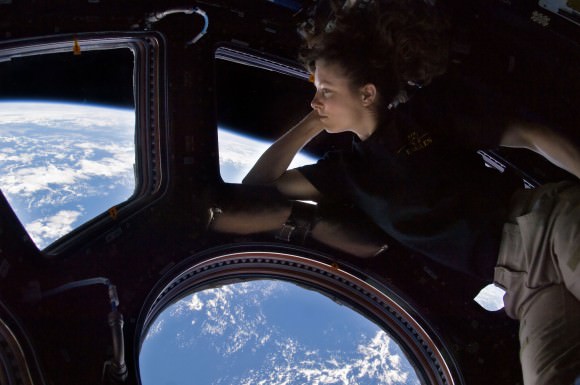
Before we talk about the places and ways humans could colonize the rest of the Solar System, it’s important to talk about what it takes to get from place to place.
Just to get from the surface of Earth into orbit around our planet, you need to be going about 10 km/s sideways. This is orbit, and the only way we can do it today is with rockets. Once you’ve gotten into Low Earth Orbit, or LEO, you can use more propellant to get to other worlds.
If you want to travel to Mars, you’ll need an additional 3.6 km/s in velocity to escape Earth gravity and travel to the Red Planet. If you want to go to Mercury, you’ll need another 5.5 km/s.
And if you wanted to escape the Solar System entirely, you’d need another 8.8 km/s. We’re always going to want a bigger rocket.
The most efficient way to transfer from world to world is via the Hohmann Transfer. This is where you raise your orbit and drift out until you cross paths with your destination. Then you need to slow down, somehow, to go into orbit.
One of our primary goals of exploring and colonizing the Solar System will be to gather together the resources that will make future colonization and travel easier. We need water for drinking, and to split it apart for oxygen to breathe. We can also turn this water into rocket fuel. Unfortunately, in the inner Solar System, water is a tough resource to get and will be highly valued.
We need solid ground. To build our bases, to mine our resources, to grow our food, and to protect us from the dangers of space radiation. The more gravity we can get the better, since low gravity softens our bones, weakens our muscles, and harms us in ways we don’t fully understand.
Each world and place we colonize will have advantages and disadvantages. Let’s be honest, Earth is the best place in the Solar System, it’s got everything we could ever want and need. Everywhere else is going to be brutally difficult to colonize and make self-sustaining.
We do have one huge advantage, though. Earth is still here, we can return whenever we like. The discoveries made on our home planet will continue to be useful to humanity in space through communications, and even 3D printing. Once manufacturing is sophisticated enough, a discovery made on one world could be mass produced half a solar system away with the right raw ingredients.
We will learn how to make what we need, wherever we are, and how to transport it from place to place, just like we’ve always done.

Mercury is the closest planet from the Sun, and one of the most difficult places that we might attempt the colonize. Because it’s so close to the Sun, it receives an enormous amount of energy. During the day, temperatures can reach 427 C, but without an atmosphere to trap the heat, night time temperatures dip down to -173 C. There’s essentially no atmosphere, 38% the gravity of Earth, and a single solar day on Mercury lasts 176 Earth days.
Mercury does have some advantages, though. It has an average density almost as high as Earth, but because of its smaller size, it actually means it has a higher percentage of metal than Earth. Mercury will be incredibly rich in metals and minerals that future colonists will need across the Solar System.
With the lower gravity and no atmosphere, it’ll be far easier to get that material up into orbit and into transfer trajectories to other worlds.
But with the punishing conditions on the planet, how can we live there? Although the surface of Mercury is either scorching or freezing, NASA’s MESSENGER spacecraft turned up regions of the planet which are in eternal shadow near the poles. In fact, these areas seem to have water ice, which is amazing for anywhere this close to the Sun.
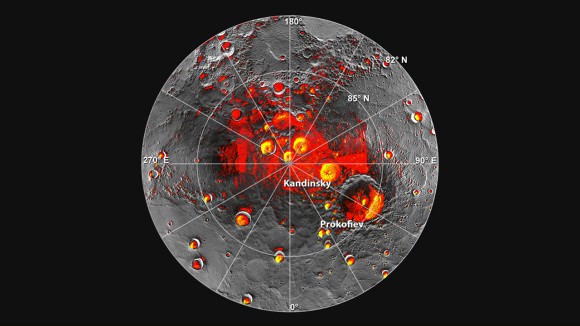
You could imagine future habitats huddled into those craters, pulling in solar power from just over the crater rim, using the reservoirs of water ice for air, fuel and water.
High powered solar robots could scour the surface of Mercury, gathering rare metals and other minerals to be sent off world. Because it’s bathed in the solar winds, Mercury will have large deposits of Helium-3, useful for future fusion reactors.
Over time, more and more of the raw materials of Mercury will find their way to the resource hungry colonies spread across the Solar System.
It also appears there are lava tubes scattered across Mercury, hollows carved out by lava flows millions of years ago. With work, these could be turned into safe, underground habitats, protected from the radiation, high temperatures and hard vacuum on the surface.
With enough engineering ability, future colonists will be able to create habitats on the surface, wherever they like, using a mushroom-shaped heat shield to protect a colony built on stilts to keep it off the sun-baked surface.
Mercury is smaller than Mars, but is a good deal denser, so it has about the same gravity, 38% of Earth’s. Now that might turn out to be just fine, but if we need more, we have the option of using centrifugal force to increase it. Space Stations can generate artificial gravity by spinning, but you can combine normal gravity with spin-gravity to create a stronger field than either would have.
So our mushroom habitat’s stalk could have an interior spinning section with higher gravity for those living inside it. You get a big mirror over it, shielding you from solar radiation and heat, you have stilts holding it off the ground, like roots, that minimize heat transfer from the warmer areas of ground outside the shield, and if you need it you have got a spinning section inside the stalk. A mushroom habitat.

Venus is the second planet in the Solar System, and it’s the evil twin of Earth. Even though it has roughly the same size, mass and surface gravity of our planet, it’s way too close to the Sun. The thick atmosphere acts like a blanket, trapping the intense heat, pushing temperatures at the surface to 462 C.
Everywhere on the planet is 462 C, so there’s no place to go that’s cooler. The pure carbon dioxide atmosphere is 90 times thicker than Earth, which is equivalent to being a kilometer beneath the ocean on Earth.
In the beginning, colonizing the surface of Venus defies our ability. How do you survive and stay cool in a thick poisonous atmosphere, hot enough to melt lead? You get above it.
One of the most amazing qualities of Venus is that if you get into the high atmosphere, about 52.5 kilometers up, the air pressure and temperature are similar to Earth. Assuming you can get above the poisonous clouds of sulphuric acid, you could walk outside a floating colony in regular clothes, without a pressure suit. You’d need a source of breathable air, though.
Even better, breathable air is a lifting gas in the cloud tops of Venus. You could imagine a future colony, filled with breathable air, floating around Venus. Because the gravity on Venus is roughly the same as Earth, humans wouldn’t suffer any of the side effects of microgravity. In fact, it might be the only place in the entire Solar System other than Earth where we don’t need to account for low gravity.
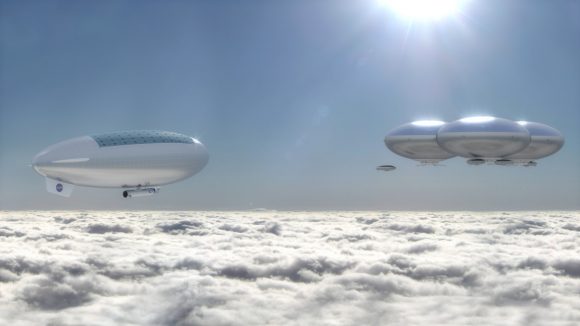
Now the day on Venus is incredibly long, 243 earth days, so if you stay over the same place the whole time it would be light for four months then dark for four months. Not ideal for solar power on a first glance, but Venus turns so slowly that even at the equator you could stay ahead of the sunset at a fast walk.
So if you have floating colonies it would take very little effort to stay constantly on the light side or dark side or near the twilight zone of the terminator. You are essentially living inside a blimp, so it may as well be mobile. And on the day side it would only take a few solar panels and some propellers to stay ahead. And since it is so close to the Sun, there’s plenty of solar power. What could you do with it?
The atmosphere itself would probably serve as a source of raw materials. Carbon is the basis for all life on Earth. We’ll need it for food and building materials in space. Floating factories could process the thick atmosphere of Venus, to extract carbon, oxygen, and other elements.
Heat resistant robots could be lowered down to the surface to gather minerals and then retrieved before they’re cooked to death.
Venus does have a high gravity, so launching rockets up into space back out of Venus’ gravity well will be expensive.
Over longer periods of time, future colonists might construct large solar shades to shield themselves from the scorching heat, and eventually, even start cooling the planet itself.

The next planet from the Sun is Earth, the best planet in the Solar System. One of the biggest advantages of our colonization efforts will be to get heavy industry off our planet and into space. Why pollute our atmosphere and rivers when there’s so much more space… in space.
Over time, more and more of the resource gathering will happen off world, with orbital power generation, asteroid mining, and zero gravity manufacturing. Earth’s huge gravity well means that it’s best to bring materials down to Earth, not carry them up to space.
However, the normal gravity, atmosphere and established industry of Earth will allow us to manufacture the lighter high tech goods that the rest of the Solar System will need for their own colonization efforts.
But we haven’t completely colonized Earth itself. Although we’ve spread across the land, we know very little about the deep ocean. Future colonies under the oceans will help us learn more about self-sufficient colonies, in extreme environments. The oceans on Earth will be similar to the oceans on Europa or Enceladus, and the lessons we learn here will teach us to live out there.
As we return to space, we’ll colonize the region around our planet. We’ll construct bigger orbital colonies in Low Earth Orbit, building on our lessons from the International Space Station.
One of the biggest steps we need to take, is understanding how to overcome the debilitating effects of microgravity: the softened bones, weakened muscles and more. We need to perfect techniques for generating artificial gravity where there is none.
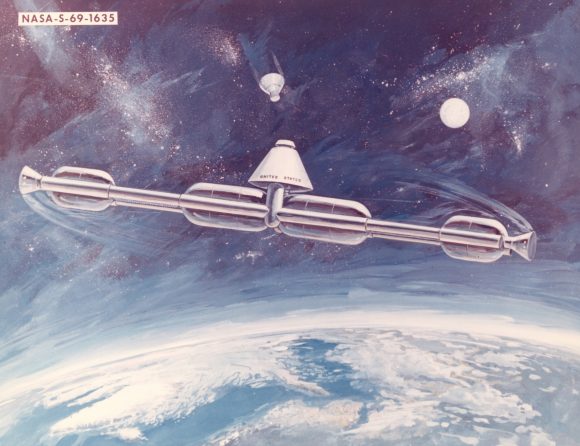
The best technique we have is rotating spacecraft to generate artificial gravity. Just like we saw in 2001, and The Martian, by rotating all or a portion of a spacecraft, you can generated an outward centrifugal force that mimics the acceleration of gravity. The larger the radius of the space station, the more comfortable and natural the rotation feels.
Low Earth Orbit also keeps a space station within the Earth’s protective magnetosphere, limiting the amount of harmful radiation that future space colonists will experience.
Other orbits are useful too, including geostationary orbit, which is about 36,000 kilometers above the surface of the Earth. Here spacecraft orbit the Earth at exactly the same rate as the rotation of Earth, which means that stations appear in fixed positions above our planet, useful for communication.
Geostationary orbit is higher up in Earth’s gravity well, which means these stations will serve a low-velocity jumping off points to reach other places in the Solar System. They’re also outside the Earth’s atmospheric drag, and don’t require any orbital boosting to keep them in place.
By perfecting orbital colonies around Earth, we’ll develop technologies for surviving in deep space, anywhere in the Solar System. The same general technology will work anywhere, whether we’re in orbit around the Moon, or out past Pluto.
When the technology is advanced enough, we might learn to build space elevators to carry material and up down from Earth’s gravity well. We could also build launch loops, electromagnetic railguns that launch material into space. These launch systems would also be able to loft supplies into transfer trajectories from world to world throughout the Solar System.
Earth orbit, close to the homeworld gives us the perfect place to develop and perfect the technologies we need to become a true spacefaring civilization. Not only that, but we’ve got the Moon.
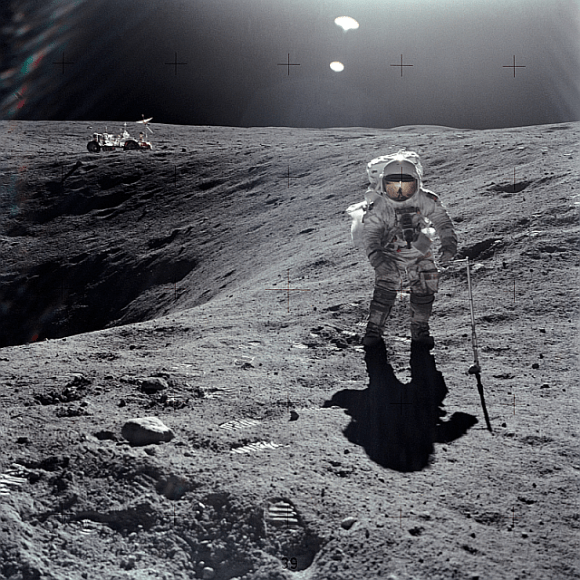
The Moon, of course, is the Earth’s only natural satellite, which orbits us at an average distance of about 400,000 kilometers. Almost ten times further than geostationary orbit.
The Moon takes a surprising amount of velocity to reach from Low Earth Orbit. It’s close, but expensive to reach, thrust speaking.
But that fact that it’s close makes the Moon an ideal place to colonize. It’s close to Earth, but it’s not Earth. It’s airless, bathed in harmful radiation and has very low gravity. It’s the place that humanity will learn to survive in the harsh environment of space.
But it still does have some resources we can exploit. The lunar regolith, the pulverized rocky surface of the Moon, can be used as concrete to make structures. Spacecraft have identified large deposits of water at the Moon’s poles, in its permanently shadowed craters. As with Mercury, these would make ideal locations for colonies.
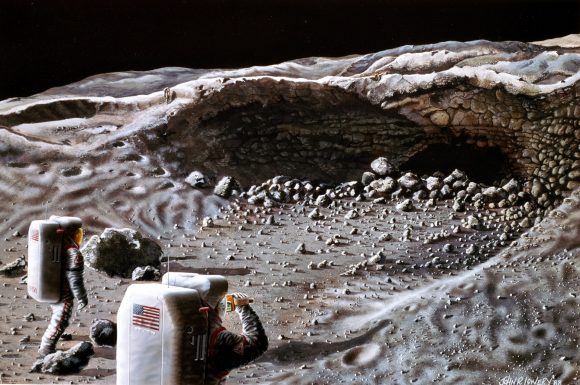
Our spacecraft have also captured images of openings to underground lava tubes on the surface of the Moon. Some of these could be gigantic, even kilometers high. You could fit massive cities inside some of these lava tubes, with room to spare.
Helium-3 from the Sun rains down on the surface of the Moon, deposited by the Sun’s solar wind, which could be mined from the surface and provide a source of fuel for lunar fusion reactors. This abundance of helium could be exported to other places in the Solar System.
The far side of the Moon is permanently shadowed from Earth-based radio signals, and would make an ideal location for a giant radio observatory. Telescopes of massive size could be built in the much lower lunar gravity.
We talked briefly about an Earth-based space elevator, but an elevator on the Moon makes even more sense. With the lower gravity, you can lift material off the surface and into lunar orbit using cables made of materials we can manufacture today, such as Zylon or Kevlar.
One of the greatest threats on the Moon is the dusty regolith itself. Without any kind of weathering on the surface, these dust particles are razor sharp, and they get into everything. Lunar colonists will need very strict protocols to keep the lunar dust out of their machinery, and especially out of their lungs and eyes, otherwise it could cause permanent damage.

Although the vast majority of asteroids in the Solar System are located in the main asteroid belt, there are still many asteroids orbiting closer to Earth. These are known as the Near Earth Asteroids, and they’ve been the cause of many of Earth’s great extinction events.
These asteroids are dangerous to our planet, but they’re also an incredible resource, located close to our homeworld.
The amount of velocity it takes to get to some of these asteroids is very low, which means travel to and from these asteroids takes little energy. Their low gravity means that extracting resources from their surface won’t take a tremendous amount of energy.
And once the orbits of these asteroids are fully understood, future colonists will be able to change the orbits using thrusters. In fact, the same system they use to launch minerals off the surface would also push the asteroids into safer orbits.
These asteroids could be hollowed out, and set rotating to provide artificial gravity. Then they could be slowly moved into safe, useful orbits, to act as space stations, resupply points, and permanent colonies.
There are also gravitationally stable points at the Sun-Earth L4 and L5 Lagrange Points. These asteroid colonies could be parked there, giving us more locations to live in the Solar System.
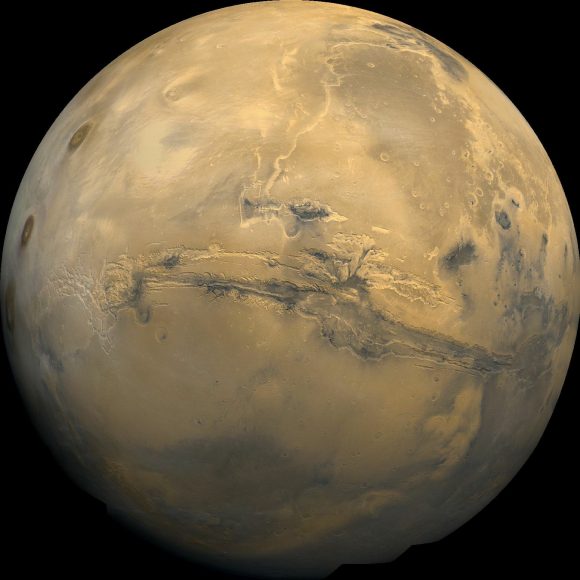
The future of humanity will include the colonization of Mars, the fourth planet from the Sun. On the surface, Mars has a lot going for it. A day on Mars is only a little longer than a day on Earth. It receives sunlight, unfiltered through the thin Martian atmosphere. There are deposits of water ice at the poles, and under the surface across the planet.
Martian ice will be precious, harvested from the planet and used for breathable air, rocket fuel and water for the colonists to drink and grow their food. The Martian regolith can be used to grow food. It does have have toxic perchlorates in it, but that can just be washed out.
The lower gravity on Mars makes it another ideal place for a space elevator, ferrying goods up and down from the surface of the planet.
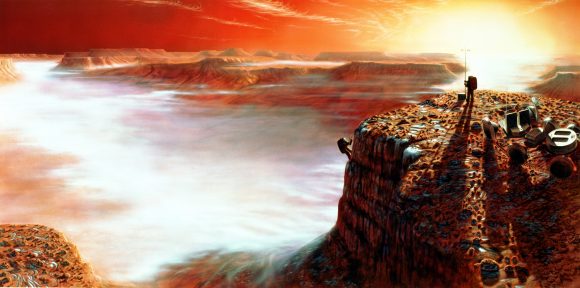
Unlike the Moon, Mars has a weathered surface. Although the planet’s red dust will get everywhere, it won’t be toxic and dangerous as it is on the Moon.
Like the Moon, Mars has lava tubes, and these could be used as pre-dug colony sites, where human Martians can live underground, protected from the hostile environment.
Mars has two big problems that must be overcome. First, the gravity on Mars is only a third that of Earth’s, and we don’t know the long term impact of this on the human body. It might be that humans just can’t mature properly in the womb in low gravity.
Researchers have proposed that Mars colonists might need to spend large parts of their day on rotating centrifuges, to simulate Earth gravity. Or maybe humans will only be allowed to spend a few years on the surface of Mars before they have to return to a high gravity environment.
The second big challenge is the radiation from the Sun and interstellar cosmic rays. Without a protective magnetosphere, Martian colonists will be vulnerable to a much higher dose of radiation. But then, this is the same challenge that colonists will face anywhere in the entire Solar System.
That radiation will cause an increased risk of cancer, and could cause mental health issues, with dementia-like symptoms. The best solution for dealing with radiation is to block it with rock, soil or water. And Martian colonists, like all Solar System colonists will need to spend much of their lives underground or in tunnels carved out of rock.
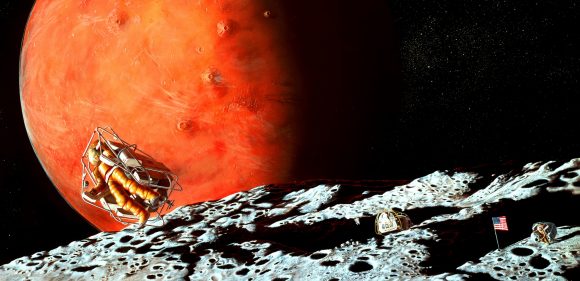
In addition to Mars itself, the Red Planet has two small moons, Phobos and Deimos. These will serve as ideal places for small colonies. They’ll have the same low gravity as asteroid colonies, but they’ll be just above the gravity well of Mars. Ferries will travel to and from the Martian moons, delivering fresh supplies and sending Martian goods out to the rest of the Solar System.
We’re not certain yet, but there are good indicators these moons might have ice inside them, if so that is an excellent source of fuel and could make initial trips to Mars much easier by allowing us to send a first expedition to those moons, who then begin producing fuel to be used to land on Mars and to leave Mars and return home.
According to Elon Musk, if a Martian colony can reach a million inhabitants, it’ll be self-sufficient from Earth or any other world. At that point, we would have a true, Solar System civilization.
Now, continue on to the other half of this article, written by Isaac Arthur, where he talks about what it will take to colonize the outer Solar System. Where water ice is plentiful but solar power is feeble. Where travel times and energy require new technologies and techniques to survive and thrive.
Colonizing the Outer Solar System
Okay, so this article is Colonizing the Outer Solar System, and is actually part 2 of our team up with Fraser Cain of Universe Today, who looked at colonizing the inner solar system. You might want jump over there now and watch that part first, if you are coming in from having seen part 1, welcome, it is great having you here.
Without further ado let us get started. There is no official demarcation between the inner and outer solar system but for today we will be beginning the outer solar system at the Asteroid Belt.
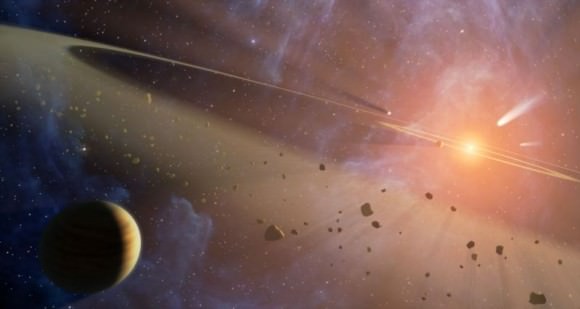
The Asteroid Belt is always of interest to us for colonization. We have talked about mining them before if you want the details on that but for today I’ll just remind everyone that there are very rich in metals, including precious metals like gold and platinum, and that provides all the motivation we need to colonize them. We have a lot of places to cover so we won’t repeat the details on that today.
You cannot terraform asteroids the way you could Venus or Mars so that you could walk around on them like Earth, but in every respect they have a lot going for them as a candidate. They’ve got plenty for rock and metal for construction, they have lots of the basic organic elements, and they even have some water. They also get a decent amount of sunlight, less than Mars let alone Earth, but still enough for use as a power source and to grow plants.
But they don’t have much gravity, which – pardon the pun – has its ups and downs. There just isn’t much mass in the Belt. The entire thing has only a small fraction of the mass of our moon, and over half of that is in the four biggest asteroids, essentially dwarf planets in their own right. The remainder is scattered over millions of asteroids. Even the biggest, Ceres, is only about 1% of 1% of Earth’s mass, has a surface gravity of 3% Earth-normal, and an escape velocity low enough most model rockets could get into orbit. And again, it is the biggest, most you could get away from by jumping hard and if you dropped an object on one it might take a few minutes to land.
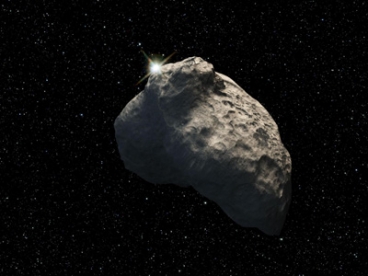
You can still terraform one though, by definition too. The gentleman who coined the term, science fiction author Jack Williamson, who also coined the term genetic engineering, used it for a smaller asteroid just a few kilometers across, so any definition of terraforming has to include tiny asteroids too.
Of course in that story it’s like a small planet because they had artificial gravity, we don’t, if we want to fake gravity without having mass we need to spin stuff around. So if we want to terraform an asteroid we need to hollow it out and fill it with air and spin it around.
Of course you do not actually hollow out the asteroid and spin it, asteroids are loose balls of gravel and most would fly apart given any noticeable spin. Instead you would hollow it out and set a cylinder spinning inside it. Sort of like how a good thermos has an outside container and inside one with a layer of vacuum in between, we would spin the inner cylinder.
You wouldn’t have to work hard to hollow out an asteroid either, most aren’t big enough to have sufficient gravity and pressure to crush an empty beer can even at their center. So you can pull matter out from them very easily and shore up the sides with very thin metal walls or even ice. Or just have your cylinder set inside a second non-spinning outer skin or superstructure, like your washer or dryer.
You can then conduct your mining from the inside, shielded from space. You could ever pressurize that hollowed out area if your spinning living area was inside its own superstructure. No gravity, but warmth and air, and you could get away with just a little spin without tearing it apart, maybe enough for plants to grow to normally.
It should be noted that you can potentially colonize even the gas giants themselves, even though our focus today is mostly on their moons. That requires a lot more effort and technology then the sorts of colonies we are discussing today, Fraser and I decided to keep things near-future and fairly low tech, though he actually did an article on colonizing Jupiter itself last year that was my main source material back before got to talking and decided to do a video together.

Hydrogen is plentiful on Jupiter itself and floating refineries or ships that fly down to scoop it up might be quite useful, but again today we are more interested in its moons. The biggest problem with colonizing the moons of Jupiter is all the radiation the planet gives off.
Europa is best known as a place where the surface is covered with ice but beneath it is thought to be a vast subsurface ocean. It is the sixth largest moon coming right behind our own at number five and is one of the original four moons Galileo discovered back in 1610, almost two centuries before we even discovered Uranus, so it has always been a source of interest. However as we have discovered more planets and moons we have come to believe quite a few of them might also have subsurface oceans too.
Now what is neat about them is that water, liquid water, always leaves the door open to the possibility of life already existing there. We still know so little about how life originally evolved and what conditions permit that to occur that we cannot rule out places like Europa already having their own plants and animals swimming around under that ice.
They probably do not and obviously we wouldn’t want to colonize them, beyond research bases, if they did, but if they do not they become excellent places to colonize. You could have submarine cities in such places floating around in the sea or those buried in the surface ice layer, well shielded from radiation and debris. The water also geysers up to the surface in some places so you can start off near those, you don’t have to drill down through kilometers of ice on day one.
Water, and hydrogen, are also quite uncommon in the inner solar system so having access to a place like Europa where the escape velocity is only about a fifth of our own is quite handy for export. Now as we move on to talk about moons a lot it is important to note that when I say something has a fifth of the escape velocity of Earth that doesn’t mean it is fives time easier to get off of. Energy rises with the square of velocity so if you need to go five times faster you need to spend 5-squared or 25 times more energy, and even more if that place has tons of air creating friction and drag, atmospheres are hard to claw your way up through though they make landing easier too. But even ignoring air friction you can move 25 liters of water off of Europa for every liter you could export from Earth and even it is a very high in gravity compared to most moons and comets. Plus we probably don’t want to export lots of water, or anything else, off of Earth anyway.
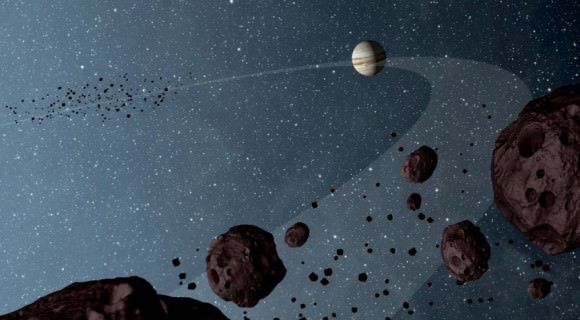
We should start by noting two things. First, the Asteroid Belt is not the only place you find asteroids, Jupiter’s Trojan Asteroids are nearly as numerous, and every planet, including Earth, has an equivalent to Jupiter’s Trojan Asteroids at its own Lagrange Points with the Sun. Though just as Jupiter dwarfs all the other planets so to does its collection of Lagrangian objects. They can quite big too, the largest 624 Hektor, is 400 km across, and has a size and shape similar to Pennsylvania.
And as these asteroids are at stable Lagrange Points, they orbit with Jupiter but always ahead and behind it, making transit to and from Jupiter much easier and making good waypoints.
Before we go out any further in the solar system we should probably address how you get the energy to stay alive. Mars is already quite cold compared to Earth, and the Asteroids and Jupiter even more so, but with thick insulation and some mirrors to bounce light in you can do fairly decently. Indeed, sunlight out by Jupiter is already down to just 4% of what Earth gets, meaning at Jovian distances it is about 50 W/m²
That might not sound like much but it is actually almost a third of what average illumination is on Earth, when you factor in atmospheric reflection, cloudy days, nighttime, and higher, colder latitudes. It is also a good deal brighter than the inside of most well-lit buildings, and is enough for decently robust photosynthesis to grow food. Especially with supplemental light from mirrors or LED growth lamps.
But once you get out to Saturn and further that becomes increasingly impractical and a serious issue, because while food growth does not show up on your electric bill it is what we use virtually all our energy for. Closer in to the sun we can use solar panels for power and we do not need any power to grow food. As we get further out we cannot use solar and we need to heat or cold habitats and supply lighting for food, so we need a lot more power even as our main source dries up.
So what are our options? Well the first is simple, build bigger mirrors. A mirror can be quite large and paper thin after all. Alternatively we can build those mirrors far away, closer to the sun, and and either focus them on the place we want illuminated or send an energy beam, microwaves perhaps or lasers, out to the destination to supply energy.
We also have the option of using fission, if we can find enough Uranium or Thorium. There is not a lot of either in the solar system, in the area of about one part per billion, but that does amount to hundreds of trillions of tons, and it should only take a few thousand tons a year to supply Earth’s entire electric grid. So we would be looking at millions of years worth of energy supply.
Of course fusion is even better, particularly since hydrogen becomes much more abundant as you get further from the Sun. We do not have fusion yet, but it is a technology we can plan around probably having inside our lifetimes, and while uranium and thorium might be counted in parts per billion, hydrogen is more plentiful than every other element combines, especially once you get far from the Sun and Inner Solar System.
So it is much better power source, an effectively unlimited one except on time scales of billions and trillion of years. Still, if we do not have it, we still have other options. Bigger mirrors, beaming energy outwards from closer to the Sun, and classic fission of Uranium and Thorium. Access to fusion is not absolutely necessary but if you have it you can unlock the outer solar system because you have your energy supply, a cheap and abundant fuel supply, and much faster and cheaper spaceships.
Of course hydrogen, plain old vanilla hydrogen with one proton, like the sun uses for fusion, is harder to fuse than deuterium and may be a lot longer developing, we also have fusion using Helium-3 which has some advantages over hydrogen, so that is worth keeping in mind as well as we proceed outward.

Okay, let’s move on to Saturn, and again our focus is on its moons more than the planet itself. The biggest of those an the most interesting for colonization is Titan.
Titan is aptly named, this titanic moon contains more mass than than all of Saturn’s sixty or so other moons and by an entire order of magnitude at that. It is massive enough to hold an atmosphere, and one where the surface pressure is 45% higher than here on Earth. Even though Titan is much smaller than Earth, its atmosphere is about 20% more massive than our own. It’s almost all nitrogen too, even more than our own atmosphere, so while you would need a breather mask to supply oxygen and it is also super-cold, so you’d need a thick insulated suit, it doesn’t have to be a pressure suit like it would on Mars or almost anyplace else.
There’s no oxygen in the atmosphere, what little isn’t nitrogen is mostly methane and hydrogen, but there is plenty of oxygen in the ice on Titan which is quite abundant. So it has everything we need for life except energy and gravity. At 14% of earth normal it is probably too low for people to comfortably and safely adapt to, but we’ve already discussed ways of dealing with that. It is low enough that you could probably flap your arms and fly, if you had wing attached.
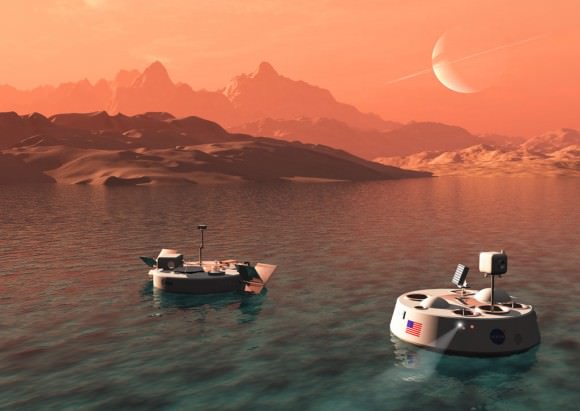
It needs some source of energy though, and we discussed that. Obviously if you’ve got fusion you have all the hydrogen you need, but Titan is one of those places we would probably want to colonize early on if we could, it is something you need a lot of to terraform other places, and is also rich in a lot of the others things we want. So we often think of it as a low-tech colony since it is one we would want early on.
In an scenario like that it is very easy to imagine a lot of local transit between Titan and its smaller neighboring moons, which are more rocky and might be easier to dig fissile materials like Uranium and Thorium out of. You might have a dozen or so small outposts on neighboring moons mining fissile materials and other metals and a big central hub on Titan they delivered that too which also exported Nitrogen to other colonies in the solar system.
Moving back and forth between moons is pretty easy, especially since things landing on Titan can aerobrake quite easily, whereas Titan itself has a pretty strong gravity well and thick atmosphere to climb out of but is a good candidate for a space elevator, since it requires nothing more sophisticated than a Lunar Elevator on our own moon and has an abundant supply of the materials needed to make Zylon for instance, a material strong enough to make an elevator there and which we can mass manufacture right now.
Titan might be the largest and most useful of Saturn’s moons, but again it isn’t the only one and not all of the other are just rocks for mining. At last count it has over sixty and many of them quite large. One of those, Enceladus, Saturn’s sixth largest moon, is a lot like Jupiter’s Moon Europa, in that we believe it has a large and thick subsurface ocean. So just like Europa it is an interesting candidate for Colonization. So Titan might be the hub for Saturn but it wouldn’t be the only significant place to colonize.

While Saturn is best known for its amazing rings, they tend to be overlooked in colonization. Now those rings are almost all ice and in total mass about a quarter as much as Enceladus, which again is Saturn’s Sixth largest moon, which is itself not even a thousandth of the Mass of Titan.
In spite of that the rings are not a bad place to set up shop. Being mostly water, they are abundant in hydrogen for fusion fuel and have little mass individually makes them as easy to approach or leave as an asteroid. Just big icebergs in space really, and there are many moonlets in the rings that can be as large as half a kilometer across. So you can burrow down inside one for protection from radiation and impacts and possibly mine smaller ones for their ice to be brought to places where water is not abundant.
In total those rings, which are all frozen water, only mass about 2% of Earth’s oceans, and about as much as the entire Antarctic sheet. So it is a lot of fresh water that is very easy to access and move elsewhere, and ice mines in the rings of Saturn might be quite useful and make good homes. Living inside an iceball might not sound appealing but it is better than it sounds like and we will discuss that more when we reach the Kupier Belt.
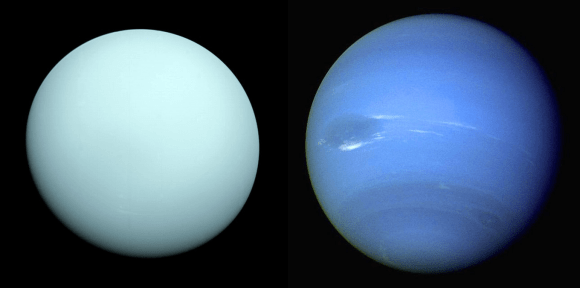
But first we still have two more planets to look at, Uranus and Neptune.
Uranus, and Neptune, are sometimes known as Ice Giants instead of Gas Giants because it has a lot more water. It also has more ammonia and methane and all three get called ices in this context because they make up most of the solid matter when you get this far out in the solar system.
While Jupiter is over a thousand times the mass of Earth, Uranus weighs in at about 15 times the Earth and has only about double the escape velocity of Earth itself, the least of any of the gas giants, and it’s strange rotation, and its strange tilt contributes to it having much less wind than other giants. Additionally the gravity is just a little less than Earth’s in the atmosphere so we have the option for floating habitats again, though it would be a lot more like a submarine than a hot air balloon.
Like Venus, Uranus has very long days, at least in terms of places receiving continual sunlight, the poles get 42 years of perpetual sunlight then 42 of darkness. Sunlight being a relative term, the light is quite minimal especially inside the atmosphere. The low wind in many places makes it a good spot for gas extraction, such as Helium-3, and it’s a good planet to try to scoop gas from or even have permanent installations.
Now Uranus has a large collection of moons as well, useful and colonizable like the other moons we have looked at, but otherwise unremarkable beyond being named for characters from Shakespeare, rather than the more common mythological names. None have atmospheres though there is a possibility Oberon or Titania might have subsurface oceans.
Neptune makes for a brief entry, it is very similar to Uranus except it has the characteristically high winds of gas giants that Uranus’s skewed poles mitigate, meaning it has no advantages over Uranus and the disadvantages of high wind speeds everywhere and being even further from the Sun. It too has moons and one of them, Triton, is thought to have subsurface oceans as well. Triton also presumably has a good amount of nitrogen inside it since it often erupts geysers of nitrogen from its surface.
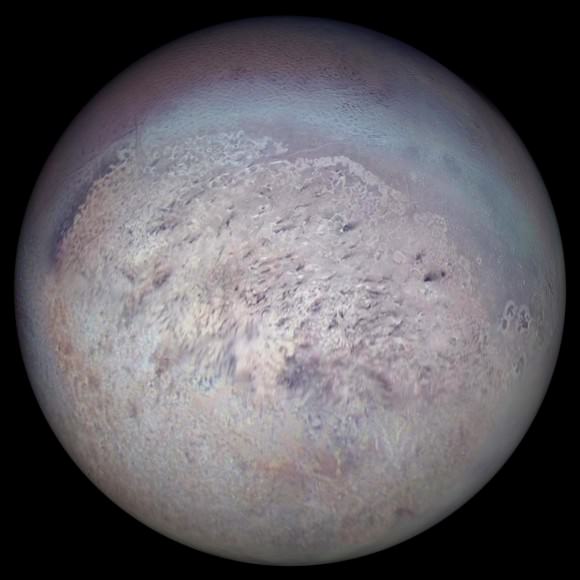
Triton is one of the largest moons in the solar system, coming in seventh just after our Moon, number 5, and Europa at number 6. Meaning that were it not a moon it would probably qualify as a Dwarf Planet and it is often thought Pluto might be an escaped moon Neptune. So Triton might be one that didn’t escape, or didn’t avoid getting captured. In fact there are an awful lot of bodies in this general size range and composition wandering about in the outer regions of our solar system as we get out into the Kuiper Belt.
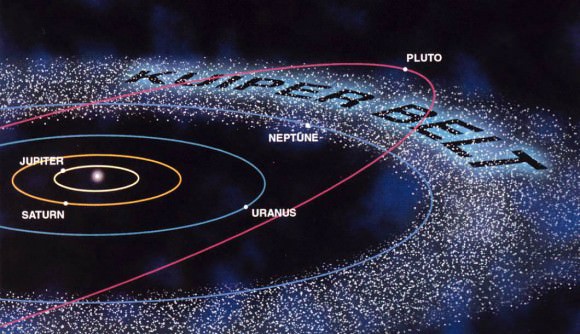
The Kuiper Belt is one of those things that has a claim on the somewhat arbitrary and hazy boundary marking the edge of the Solar System. It extends from out past Neptune to beyond Pluto and contains a good deal more mass than the asteroid Belt. It is where a lot of our comets come from and while there is plenty of rocks out there they tend to be covered in ice. In other words it is like our asteroid belt only there’s more of it and the one thing the belt is not very abundant in, water and hydrogen in general, is quite abundant out there. So if you have a power source life fusion they can be easily terraformed and are just as attractive as a source of minerals as the various asteroids and moons closer in.
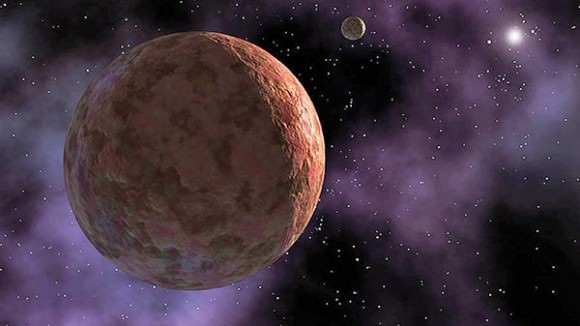
We mentioned the idea of living inside hollowed out asteroids earlier and you can use the same trick for comets. Indeed you could shape them to be much bigger if you like, since they would be hollow and ice isn’t hard to move and shape especially in zero gravity. Same trick as before, you place a spinning cylinder inside it. Not all the objects entirely ice and indeed your average comet is more a frozen ball of mud then ice with rocky cores. We think a lot of near Earth Asteroids are just leftover comets. So they are probably pretty good homes if you have fusion, lots of fuel and raw materials for both life and construction.
This is probably your cheapest interstellar spacecraft too, in terms of effort anyway. People often talk about re-directing comets to Mars to bring it air and water, but you can just as easily re-direct it out of the solar system entirely. Comets tend to have highly eccentric orbits, so if you capture one when it is near the Sun you can accelerate it then, actually benefiting from the Oberth Effect, and drive it out of the solar system into deep space. If you have a fusion power source to live inside one then you also have an interstellar spaceship drive, so you just carve yourself a small colony inside the comet and head out into deep space.
You’ve got supplies that will last you many centuries at least, even if it were home to tens of thousand of people, and while we think of smaller asteroids and comets as tiny, that’s just in comparison to planets. These things tend to be the size of mountain so there is plenty of living space and a kilometer of dirty ice between you and space makes a great shield against even the kinds of radiation and collisions you can experience at relativistic speeds.
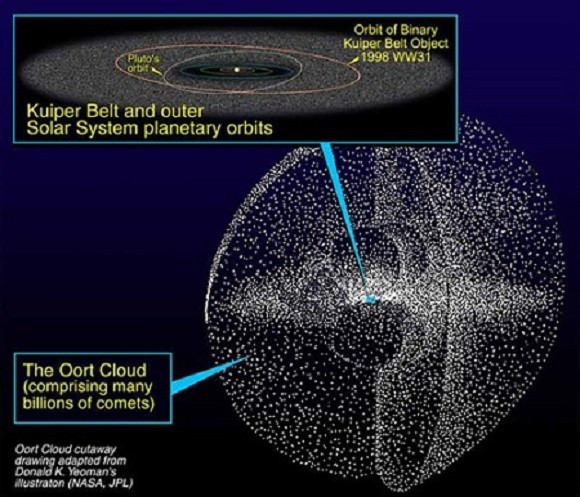
Now the Oort Cloud is much like the Kupier Belt but begins even further out and extends out probably an entire light year or more. We don’t have a firm idea of its exact dimensions or mass, but the current notion is that it has at least several Earth’s worth of mass, mostly in various icy bodies. These will be quite numerous, estimates usually assumes at least trillion icy bodies a kilometer across or bigger, and even more smaller ones. However the volume of space is so large that those kilometer wide bodies might each be a around a billion kilometers distant from neighbors, or about a light hour. So it is spread out quite thinly, and even the inner edge is about 10 light days away.
That means that from a practical standpoint there is no source of power out there, the sun is simply too diffuse for even massive collections of mirrors and solar panels to be of use. It also means light-speed messages home or to neighbors are quite delayed. So in terms of communication it is a lot more like pre-modern times in sparsely settled lands where talking with your nearest neighbors might require an hour long walk over to their farm, and any news from the big cities might take months to percolate out to you.
There’s probably uranium and thorium out there to be found, maybe a decent amount of it, so fission as a power source is not ruled out. If you have fusion instead though each of these kilometer wide icy bodies is like a giant tank of gasoline, and as with the Kupier Belt, ice makes a nice shield against impacts and radiation.
And while there might be trillions of kilometer wide chunks of ice out there, and many more smaller bodies, you would have quite a few larger ones too. There are almost certainly tons of planets in the Pluto size-range out these, and maybe even larger ones. Even after the Oort cloud you would still have a lot of these deep space rogue planets which could bridge the gap to another solar system’s Oort Cloud. So if you have fusion you have no shortage of energy, and could colonize trillions of these bodies. There probably is a decent amount of rock and metal out there too, but that could be your major import/export option shipping home ice and shipping out metals.
That’s the edge of the Solar System so that’s the end of this article. If you haven’t already read the other half, colonizing the inner Solar System, head on over now.
Chinese Space Baby Research Lands In Mongolia
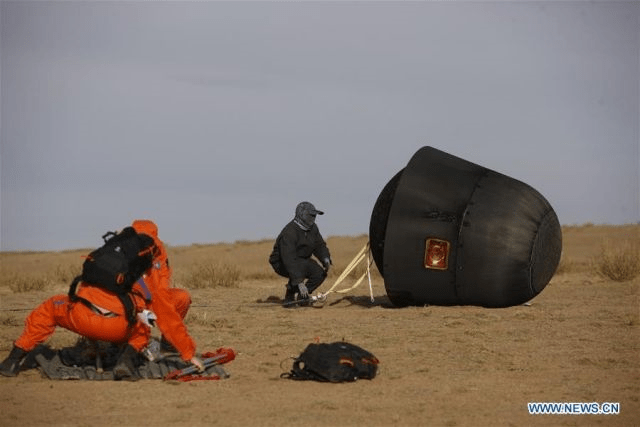
We’ve solved many of the problems associated with space travel. Humans can spend months in the zero-gravity of space, they can perform zero-gravity space-walks and repair spacecraft, they can walk on the surface of the Moon, and they can even manage, ahem, personal hygiene in space. We’re even making progress in understanding how to grow food in space. But one thing remains uncertain: can we make baby humans in space?
According to a recent successful Chinese experiment, the answer is a tentative yes. Sort of.
The Chinese performed a 96-hour experiment to test the viability of mammal embryos in space. They placed 6,000 mouse embryos in a micro-wave sized chamber aboard a satellite, to see if they would develop into blastocysts. The development of embryos into blastocysts is a crucial step in reproduction. Once the blastocysts have developed, they attach themselves to the wall of the uterus. Cameras on the inside of the chamber allowed Chinese scientists on Earth to monitor the experiment.
Duan Enkui, from the Chinese Academy of Sciences, who is the principal researcher for this experiment, told China Daily “The human race may still have a long way to go before we can colonise space, but before that we have to figure out whether it is possible for us to survive and reproduce in the outer space environment like we do on Earth.”
The Chinese say some of the embryos became blastocysts, and are claiming success in an endeavour that others have tried and failed at. NASA has performed similar experiments on Earth, where the micro-gravity conditions in space were duplicated. A study from 2009 showed that fertilization occurred normally in micro-gravity environments, but the eventual birth rate for the micro-gravity subjects was lower than for a 1G control group. The results from this study concluded that normal Earth gravity might be necessary for the blastocysts to successfully attach themselves to the uterus.
It’s important to note that at this point that China has proclaimed success by saying “some” of the embryos developed. But how many? There were 6,000 of them. Until they attach numbers to their claim, the word “some” doesn’t tell us much in terms of humans colonizing space. It also doesn’t tell us whether or not the crucial blastocyst to uterus attachment is inhibited by micro-gravity. Call us pedantic here at Universe Today, but it’s kind of important to know the numbers.
On the other hand, an increase in scientific curiosity related to procreating in space is a healthy development. The ideas and plans for missions to Mars and an eventual long-term presence in space are heating up. Making babies in space might not that relevant right now, but issues have a way of sneaking up on us.
The full results of this Chinese experiment will be interesting, if and when they’re made public. They may help clarify one aspect of the whole “making babies in space” problem. But in the bigger picture, things are still a little cloudy.
On shuttle mission STS-80, 2-cell mouse embryos were taken into space micro-gravity for 4 days. None of them developed into blastocysts, while a control group on the ground did. Another experiment in 1979, aboard Cosmos 1129, had male and female rats aboard. Though post-experiment results showed that some of the female rats had indeed ovulated, none of them gave birth. Two of the females even got pregnant, but the fetuses were reportedly r-absorbed.
Still, we have to give credit where its due. And the Chinese study has shown that mammal blastocysts can develop from embryos in micro-gravity. Still, there’s more to the space environment than low gravity. The radiation environment is much different. One study called the Space Pup study, led by principal investigator Teruhiko Wakayama, from the Riken Center for Developmental Biology, Japan, hopes to shed some light on that aspect of reproduction in space.
Space Pup will take sample of freeze-dried mouse sperm to the ISS for periods of 1, 12, and 24 months. Then, the samples will be returned to Earth and be used to fertilize mouse eggs.
There’s a lot more to learn in the area of reproduction in space. The next steps will involve keeping live mammals in space to monitor their reproduction. It’s not like ISS astronauts need more work to do, but maybe they’ll like having some animals along for company.
Maybe we’ll need to think outside the box when it comes to procreation in space. Maybe some type of in-vitro procedure will help humans spread the love in space. Or maybe, we’ll need to look to science fiction for inspiration. After all, countless alien species seem to be able to reproduce effectively, given the right circumstances.
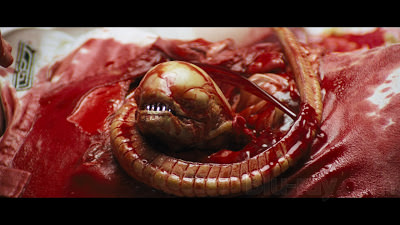
Beyond “Fermi’s Paradox” II: Questioning the Hart-Tipler Conjecture

Welcome back to our Fermi Paradox series, where we take a look at possible resolutions to Enrico Fermi’s famous question, “Where Is Everybody?” Today, we examine the possibility that the reason we’ve found no evidence of alien civilizations is because there are none out there.
It’s become a legend of the space age. The brilliant physicist Enrico Fermi, during a lunchtime conversation at Los Alamos National Laboratory in 1950, is supposed to have posed a conundrum for proponents of the existence of extraterrestrial civilizations.
If space traveling aliens exist, so the argument goes, they would spread through the galaxy, colonizing every habitable world. They should then have colonized Earth. They should be here, but because they aren’t, they must not exist.
This is the argument that has come to be known as “Fermi’s paradox”. The problem is, as we saw in the first installment, Fermi never made it. As his surviving lunch companions recall (Fermi himself died of cancer just four years later, and never published anything on the topic of extraterrestrial intelligence), he simply raised a question, “Where is everybody?” to which there are many possible answers.
Continue reading “Beyond “Fermi’s Paradox” II: Questioning the Hart-Tipler Conjecture”



